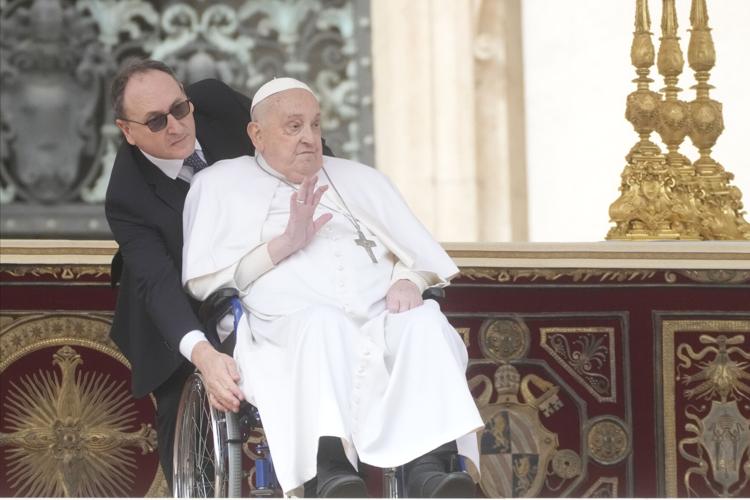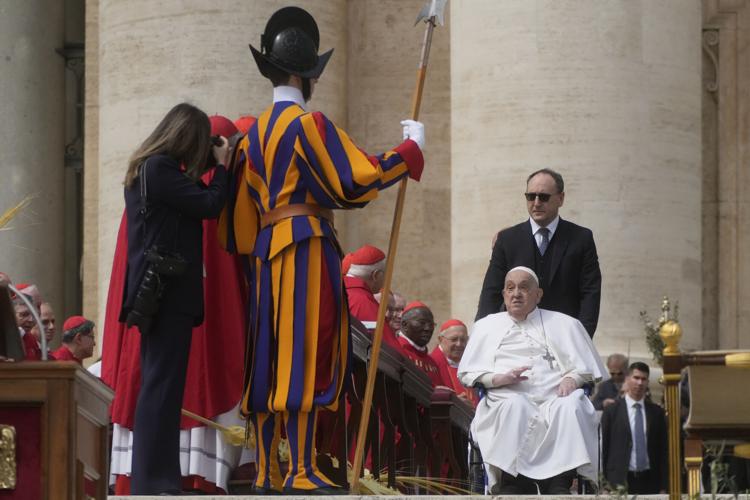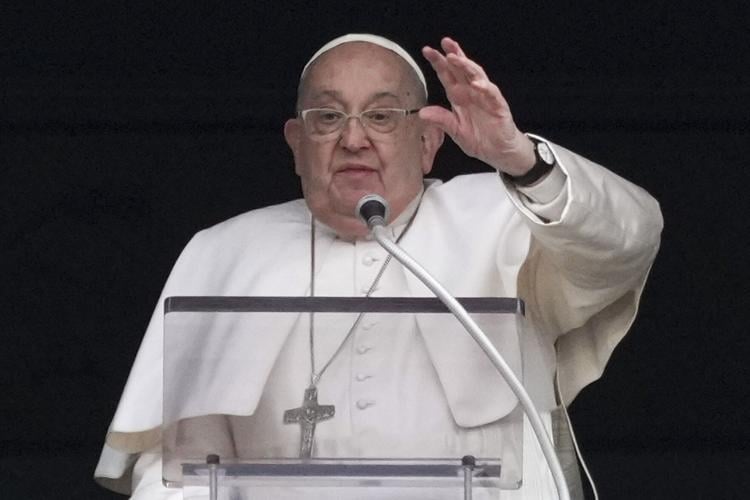Why has Pope Francis taken such a strong stance against the Traditional Latin Mass, and what are the implications of his actions for the future of the Catholic Church? The pontiff's decisions, particularly the motu proprio Traditionis Custodes, have ignited a firestorm of debate, revealing deep divisions within the Church about tradition, unity, and the interpretation of the Second Vatican Council.
The Catholic Church, a body steeped in centuries of tradition, has always navigated a complex interplay between continuity and change. The Traditional Latin Mass (TLM), also known as the Extraordinary Form of the Roman Rite, stands as a potent symbol of this tension. It represents a connection to the Church's past, a tangible link to the liturgical practices that shaped generations of Catholics. However, this very connection has become a point of contention under Pope Francis, leading to significant restrictions and clarifications regarding its celebration.
Pope Francis's actions stem from his conviction that the liturgical reforms of the Second Vatican Council, particularly the introduction of the Novus Ordo Mass (the Mass of Pope Paul VI), represent the authentic expression of the Church's liturgy in the Latin Rite. He views the TLM as potentially divisive, believing that its widespread use could undermine the unity of the Church and lead to a rejection of the Council's teachings. His stated aim, as he explained in a conversation with Jesuits in 2023, is to prevent the TLM from being used "in an ideological way, to go backward."
The pontiff's interventions regarding the TLM began with the issuance of Traditionis Custodes on July 16, 2021. This motu proprio, meaning "on his own initiative," dramatically reversed the policies of his predecessor, Pope Benedict XVI, who had relaxed restrictions on the celebration of the TLM in 2007. Traditionis Custodes imposed sweeping limitations, effectively requiring priests to obtain explicit permission from their bishops to celebrate the TLM, and limiting the locations where it could be offered. The document also emphasized that the Novus Ordo Mass remained the unique expression of the liturgy of the Latin Rite.
Following the release of Traditionis Custodes, bishops across the globe were tasked with implementing its directives. This resulted in a variety of approaches, with some bishops taking a more restrictive stance than others. Some designated specific locations for the TLM, while others faced significant challenges in accommodating the needs of traditionalist communities. The ensuing confusion and varied responses highlighted the complexities inherent in balancing tradition and reform.
Further clarifying Pope Francis's position, the Vatican has issued additional instructions and rescripts. A rescript is a pope's written response to specific questions, providing further guidance and interpretation of existing policies. These clarifications have consistently reinforced the limitations imposed by Traditionis Custodes and have emphasized the importance of unity in liturgical practice.
The impact of these measures is multifaceted. On the one hand, the restrictions aim to promote unity and ensure that the liturgical reforms of the Second Vatican Council are not undermined. On the other hand, they have been criticized by traditionalist Catholics who view the TLM as a vital expression of their faith and a source of spiritual nourishment. Some perceive the restrictions as an attack on their traditions, while others feel that the Church is closing the door on a potential source of vocations, as young men often express a desire to celebrate the TLM.
The debate over the TLM also touches upon broader questions about the interpretation of the Second Vatican Council. While Pope Francis emphasizes the Council's reforms, some traditionalists believe that these reforms have been implemented in ways that have distorted the Church's liturgical traditions. The Council itself, in its Dogmatic Constitution on the Church, Lumen Gentium, acknowledged the value of various liturgical traditions, and the ongoing debate centers on how best to balance these traditions with the needs of the modern Church.
It's important to understand the historical context. The Latin Mass, formalized by Pope Pius V in 1570, has evolved over centuries. It differs significantly from the Novus Ordo Mass in terms of language (Latin vs. the vernacular), the priest's orientation (facing the altar vs. facing the people), and the structure of the liturgy. The Second Vatican Council's reforms, which resulted in the Novus Ordo, aimed to make the Mass more accessible and understandable to the faithful.
In response to questions, here's a table outlining the key points related to Pope Francis's actions on the Traditional Latin Mass, with references for further exploration.
| Topic | Details | Reference |
|---|---|---|
| Motu Proprio Traditionis Custodes | Issued July 16, 2021, severely restricts the celebration of the Traditional Latin Mass. | Vatican Website |
| Reasoning behind Restrictions | Pope Francis aims to protect the unity of the Church and prevent "distorted use" of the 1962 Missal. Concerns about ideological motivations among some TLM communities. | Vatican Press Release |
| Key Changes | Requires priests to obtain permission from their bishop to celebrate the TLM. Restricts the locations where the TLM can be offered. Emphasizes that the Novus Ordo is the unique expression of the Latin Rite. | Traditionis Custodes Document |
| Predecessor's Policy (Benedict XVI) | Pope Benedict XVI had relaxed restrictions, allowing all priests to celebrate the TLM without permission from their bishop. | Summorum Pontificum |
| Reactions and Controversy | Traditionalist Catholics express concerns about their traditions. Discussions of a division on interpretation of Vatican II. Some bishops have been more or less strict in the implementation of Traditionis Custodes. | News Articles from Various Media Outlets |
| Further Clarifications | The Vatican has issued clarifications through rescripts to reinforce Traditionis Custodes. | Vatican Website (Rescripts) |
| Sacraments | Pope Francis is forbidding the celebration of some sacraments according to the ancient rite. | Traditionis Custodes and Subsequent Directives |
| Institute of Christ the King | Pope Francis has met with leaders of the Institute of Christ the King Sovereign Priest, a Latin Mass group. | News Reports from Vatican City |
The issue of the Traditional Latin Mass also reveals a difference in perspectives on the nature of liturgical reform. Pope Francis views the reforms of the Second Vatican Council as essential, and his actions are intended to safeguard them. Conversely, some traditionalists believe that the Novus Ordo Mass represents a departure from the Church's traditions and that the TLM provides a more authentic connection to the past. These differing viewpoints are at the heart of the current controversy.
The Second Vatican Council, in its documents, sought to update the Church and make it more relevant to the modern world. The liturgical reforms, as a result of the Council, aimed to involve the laity more actively in the Mass and to foster a deeper understanding of the liturgy. The debate over the TLM, therefore, is also a debate about how best to implement the Council's vision and interpret its teachings.
The restrictions on the TLM have also raised questions about vocations. Some observers claim that young men, attracted to the TLM's reverence and liturgical beauty, are choosing to enter the priesthood with the hope of celebrating it. They see the current restrictions as an impediment to their vocations, which seems "reckless" to some.
Pope Franciss initiatives are a complex tapestry woven with threads of unity, tradition, and the interpretation of the Second Vatican Council. His emphasis on the Novus Ordo and his restrictions on the Traditional Latin Mass highlight his belief that the Church must move forward together, united in its worship and teaching. The ongoing debate over these policies will continue to shape the Church's liturgical life and the relationships among its members.
The situation continues to evolve. Pope Francis's actions reflect his vision for the Church and his desire to guide it toward a future marked by unity and a faithful adherence to the reforms of the Second Vatican Council. It remains to be seen how the Church will navigate the ongoing challenges and divisions that have arisen as a result of these policies, while the conversation about tradition, reform, and the legacy of Vatican II will continue to influence the Church for many years to come.
As the Church continues to grapple with these issues, the importance of open dialogue and mutual respect becomes increasingly apparent. The TLM, as a symbol of tradition, and the Novus Ordo, as a product of liturgical reform, can coexist in the Church. The challenge lies in finding a way to honor both traditions and to ensure that all Catholics feel welcome and valued within the Church's embrace. The future of the Church will depend on the ability to navigate these complexities with grace and understanding.
The ongoing restrictions on the traditional Latin Mass demonstrate Pope Francis's determination to guide the Church. Whether these steps will truly foster unity and strengthen the Church's mission is a question that will unfold in the years to come. The impact of these measures is already being felt across the globe, prompting conversations and debates about the very identity and future direction of the Catholic Church.


